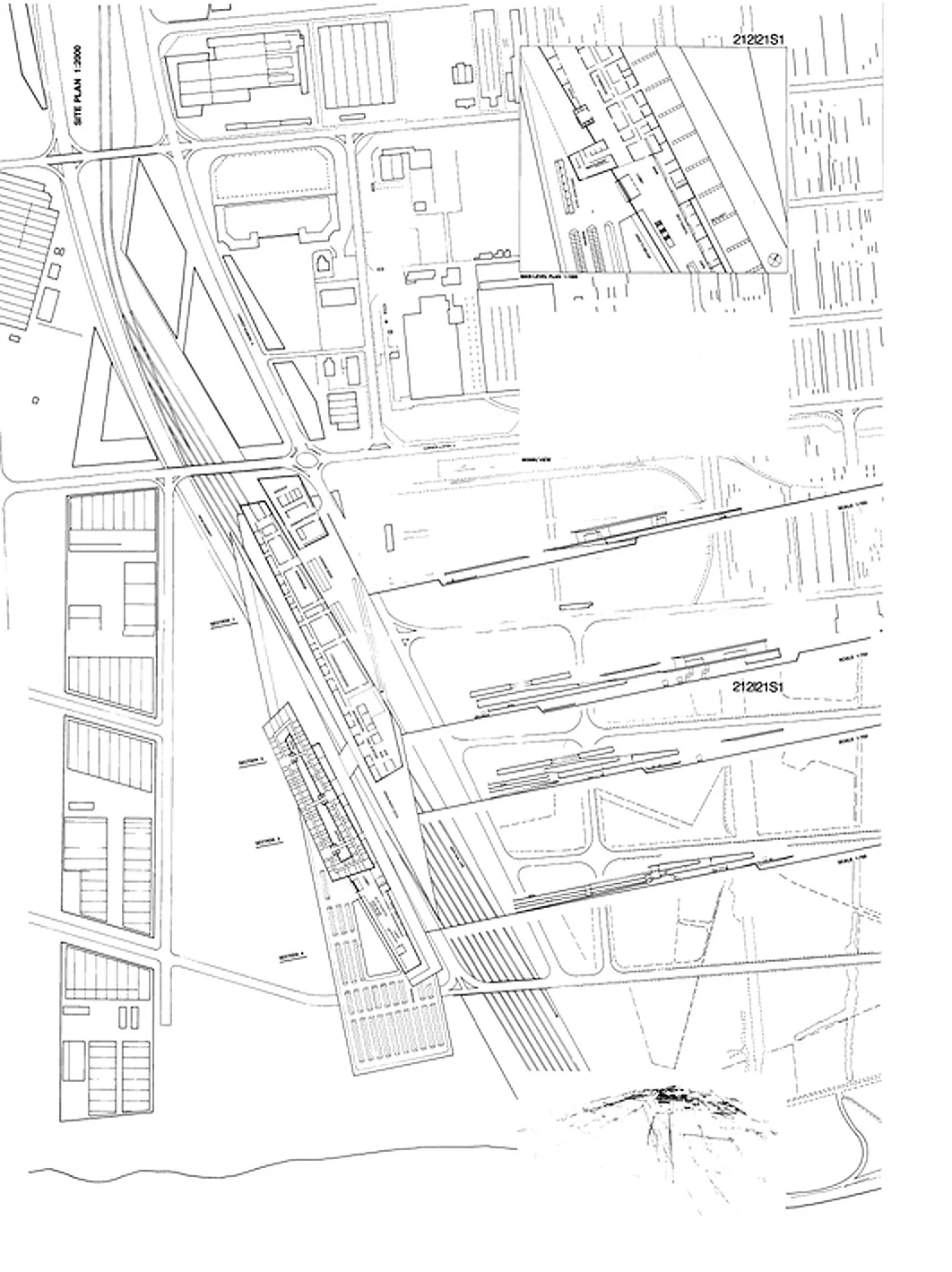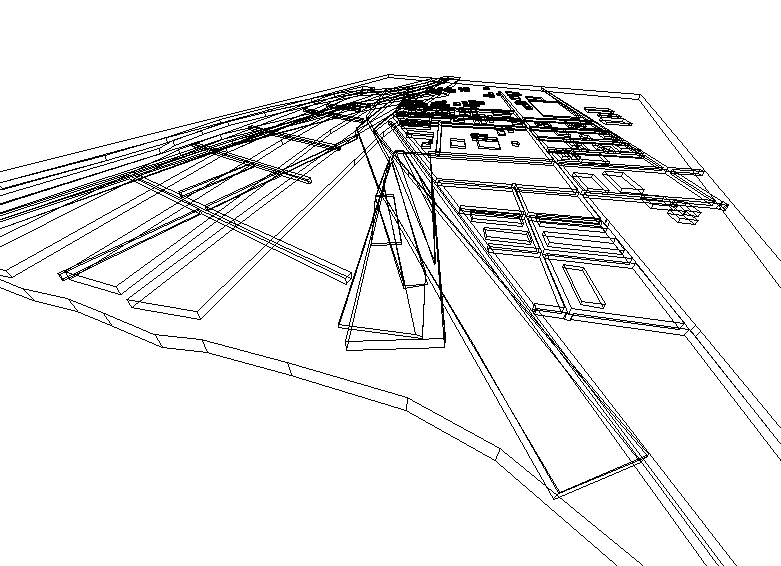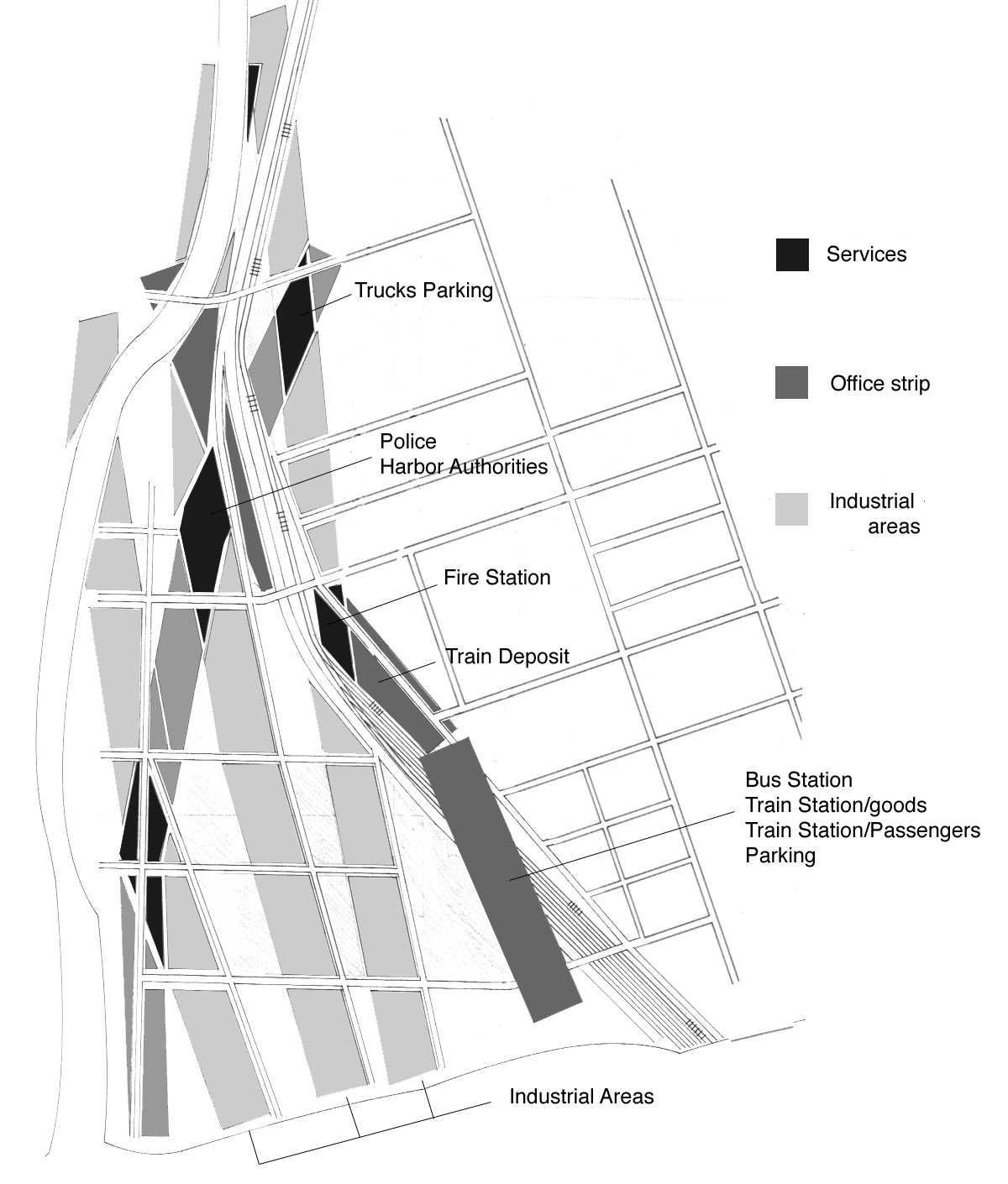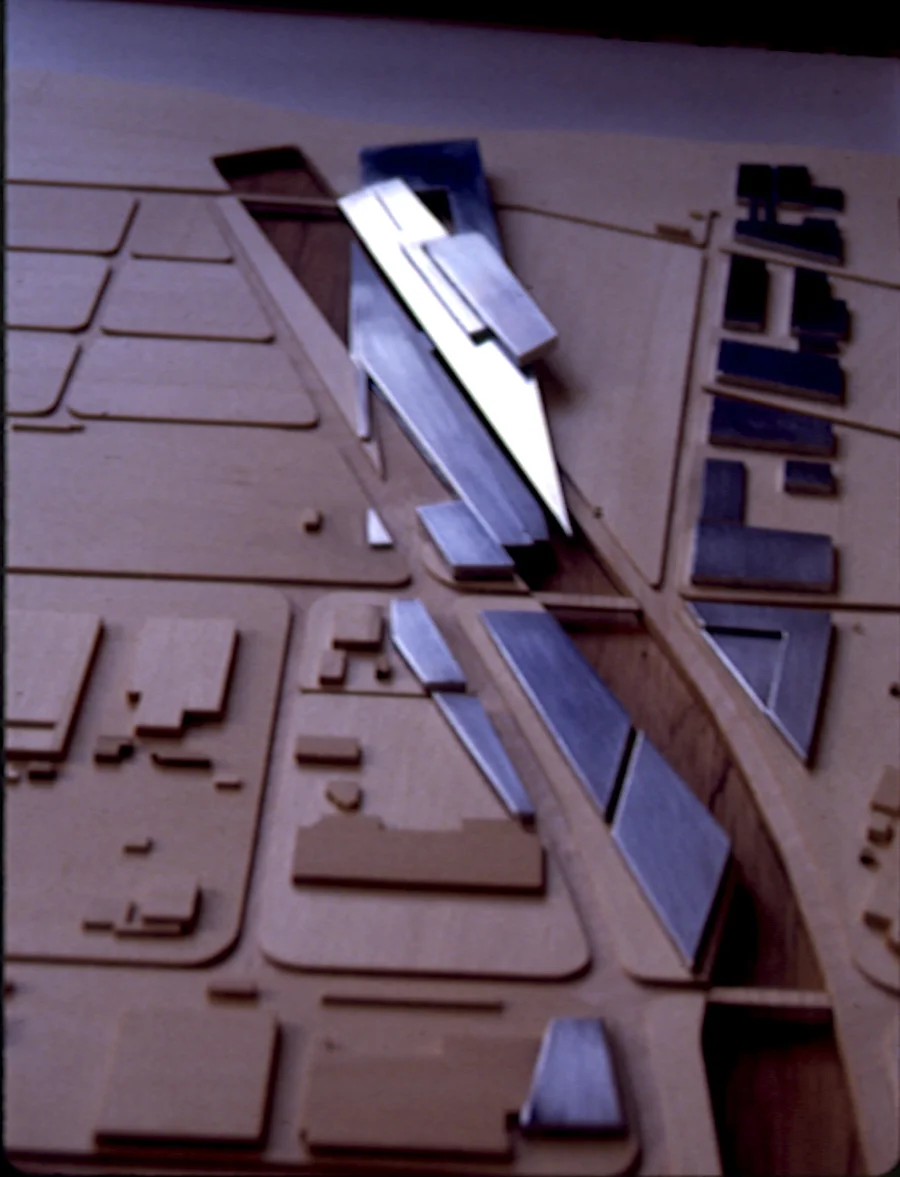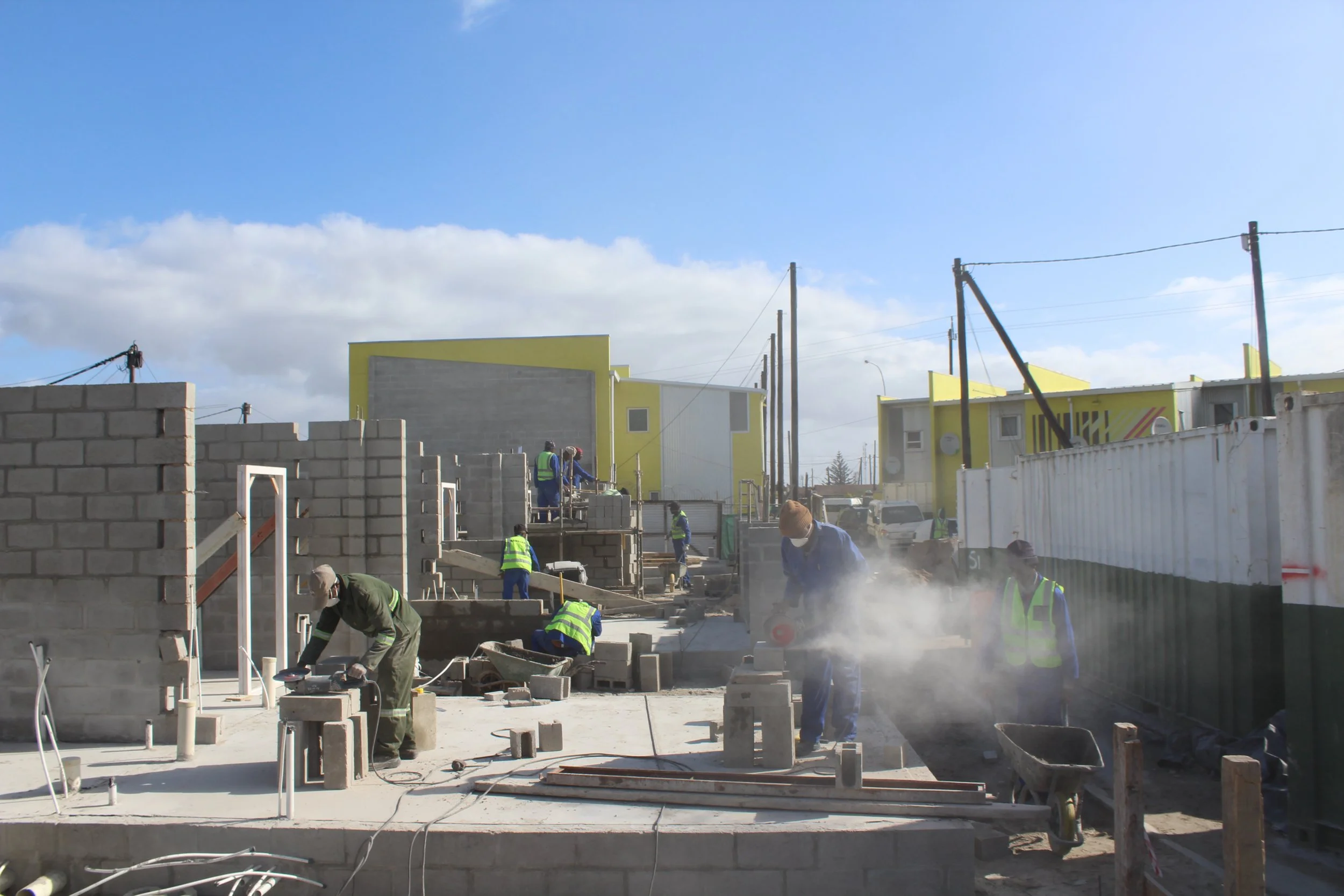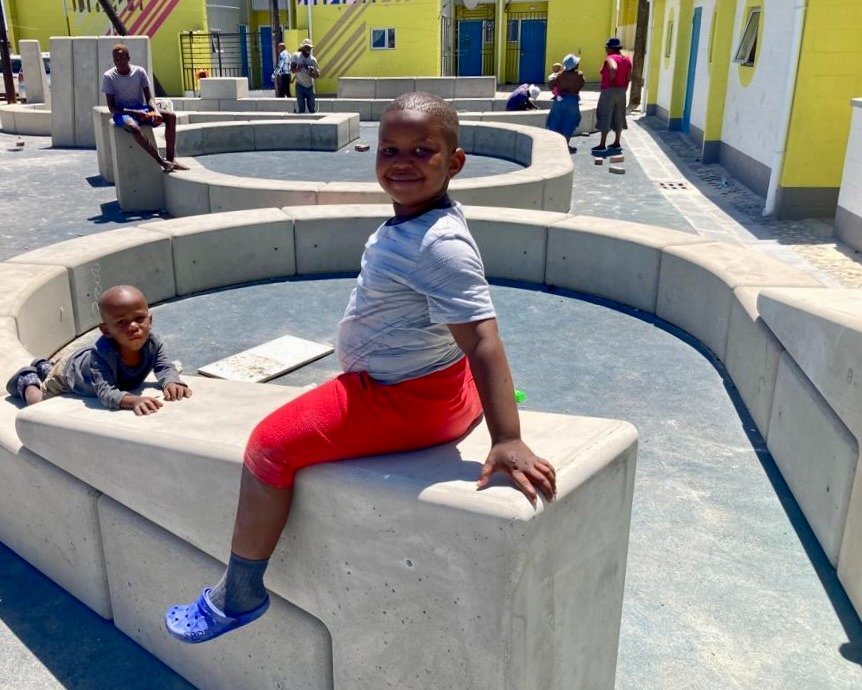Project:
Transformation of an abandoned industrial site into a new residential and hotel complex at the edge of Zurich City.
Phase:
Unbuilt
Description:
The site is conveniently located next to the main ring highway and has access to a tram stop at the back of the site. The old graphite industrial hall is to be preserved as an important artifact of the industrial era, and its enormous dimension and structure becomes the backbone and the rhythm of the new intervention. The Old industrial hall becomes the lobby for the new group of towers inserted within its structure, delivering a number of semi-private programs such as the reception, conference rooms, lobby and restaurant.
The new project proposal takes the old industrial structure rhythm to grow vertically and horizontally. A new residential linear aggregation continues the existing massing, while the large open-space located in front of the new residential bar becomes a sculpted and striated garden, sometime staying as a garden, sometime emerging as a community space- such as a library, kindergarten, community hall.
The continuing technological progress have allowed us to extend our control over the dimensions of time and space. The “mechanical machine” made progress in compressing the space with the acceleration of speed, but the step proposed by the “electro paradigm” is even stronger in its influence of compressing the spatial and temporal understanding of our environment. The “non-immediacy” condition in which we are more and more involved have forced us to re-think our spatial relations. The possibilities offered by such a mediated condition is not fundamentally unpleasant: we can actually listen to the Berlin Philharmonic Orchestra “live” from our bath tub, as well as watching the american landing in Somalia “live” from our living room. The electronic transportation of information has
allowed us to have a partial view of just everything, all the time. It seems that the present desire for an ideal urbanism would be to include this paradoxical “everything, all the time” notion, which need to be addressed in the real physical world, but not at the level of the remote controlled media environment. A continuous mode of “zapping” seems to shape some of our urban landscape and our shopping malls to respond to a clear desire of ideal urbanity of “Everything all the time with a remote control.” The desire of trying to devise strategies for an actual physical construction that would respond to these virtual conditions is the impossibility to resolve the problem. but rather to propose new scenarios and relations of habitation. The strategy to offer an urban density with a spark as well as a totally private set of space, combined with historical traces and new buildings seems to be a constant state of paradoxical conditions or a striation and compression of events.






